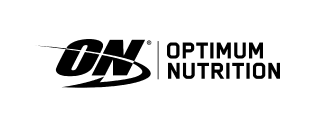
- Health advice
- Sep 17, 2015
Being of ideal weight is not only good for looking and feeling your best and helping to improve your fitness, but it also keeps you healthy.
Once considered a problem of high-income countries only, weight problems are now on the rise in low- and middle-income countries, particularly in urban settings.
According to the World Health Organization (WHO), 65% of the world’s population lives in countries where being overweight affects more people than being underweight.1
In Australia, prevalence of overweight adults has risen to 63.4% in 2011-12 from 61.2% in 2007-08 and 56.3% in 1995.2
 If you’re considering supplementing your diet with a protein powder, ‘Ask a Naturopath’ at Mr Vitamins to recommend a high-quality wholegrain brown rice powder
If you’re considering supplementing your diet with a protein powder, ‘Ask a Naturopath’ at Mr Vitamins to recommend a high-quality wholegrain brown rice powder
What’s your ideal weight?
There are a number of methods used to determine if you are overweight, such as body mass index (BMI) and waist circumference, however, most of us know when we could do with shedding a few kilos.Reasons for being overweight
There are a number of reasons why people gain weight and encounter trouble losing it. These include:- Most commonly, overeating and lack of exercise — you gain weight if you take in more food (calories/energy) than you burn up through metabolism and activity
- A sedentary lifestyle with a desk-based occupation
- Increasing age — our metabolism slows, energy decreases and we tend to be less active
- Menopause
- Health conditions, such as hypothyroidism, which need to be medically diagnosed
- Insulin resistance
- Not eating enough — missing meals and eating too little can cause your metabolism to slow down to conserve energy
The importance of nutrition
As part of a balanced diet, most individuals should consume approximately 30% protein, 50% complex carbohydrates and 15% fats of total calories. However, when following a fat-reduced diet as part of a weight management program, it is recommended to replace some dietary carbohydrate with protein. With adequate intake of protein, your body is better equipped to maintain your muscle mass and prevent muscle breakdown. Muscle is what sets your metabolic rate. The more muscle you have, the more effectively you are able to burn fat from the foods you eat, rather than storing it. Eating protein with every meal/snack also helps to slow down the release of dietary sugars into the bloodstream. This helps to minimise insulin spikes, which may in turn decrease sugar cravings and fat storage. Many individuals tend to consume an increased amount of simple carbohydrates and sugars, which means consuming a higher amount of calories with low or empty nutrient content, and therefore leading to weight gain and nutrient deficiencies. Simple carbohydrate and high GI foods (white bread, pastries, cakes, sweets, pasta, white rice, biscuits, soft drinks) tend to be the bulk of our diet. These foods are also low in nutrients and high in calories/energy that we store as excess fat. The quick release of high amounts of glucose from these foods causes the release of high amounts of insulin into the bloodstream.What is low GI/GL?
Glycaemic index (GI) is a measure of how rapidly a carbohydrate raises blood sugar levels after it is eaten, influencing the amount of insulin released from the pancreas and affecting the use of stored fats as energy. The scale is 0 to 100 (based on either white bread or glucose), with less than 55 being low and greater than 70 being high. Glycaemic load (GL) is how much carbohydrate is present in a serving of food: GL = GI ÷ 100 x grams of carbohydrate content. The scale is 0 to 60, with less than 10 being low and greater than 20 being high. You need to know both GI and GL to understand a food’s effect on blood sugar. For example, the carbohydrate in watermelon has a high GI of 72. But there isn’t a lot of carbohydrate in watermelon per serve, so its GL calculates to be low. A serving of 120g watermelon has 6g of available carbohydrate, therefore, according to the formula its GL calculation will be: 72 ÷ 100 x 6 = 4.32, rounded to a GL of 4. A low GI and GL eating plan can help you lose fat, lower cholesterol, improve your body’s sensitivity to insulin by slowly releasing glucose into your bloodstream, keep your energy levels balanced and keep you feeling fuller for longerGo for higher protein, less carbs
Diets high in protein and low in carbohydrates are associated with greater satiety and greater weight loss,3-5 especially when combined with physical activity. Exercise has been shown to have beneficial effects on heart health and metabolism, even when not taking weight loss into consideration. And losing just a small amount of weight can have even further benefits for your health.6 Ask your healthcare practitioner to recommend a weight management program that emphasises the use of whole foods with low glycaemic index (GI) and glycaemic load (GL). Incorporate nutritious meals consisting of good quality protein and fresh vegetables and fruits and daily exercise, along with additional supplements to support the weight loss process. Protein is an essential macronutrient in weight loss as it is involved in:- The body’s sensation of satiety
- Burning kilojoules
- Maintaining weight.3
- Aim to complete at least 30 minutes of moderately intensive exercise each day (aerobic, raising the heart rate), for example: cycling, power walking or climbing. The more you exercise, the more calories you burn and the faster the weight loss!
- It may be a good idea to do your workout first thing in the morning, but do what best fits in for you. Aim to eat within one hour of exercise
- A combination of aerobic and resistance training is optimal. The resting metabolic rate is increased during aerobic exercise, and resistance training increases lean body mass by strengthening and toning muscles, which also increases the resting metabolic rate. More muscle mass means greater fat-burning potential
- If you are unable to exercise, invest in a pedometer and aim to walk at least 10,000 steps per day
- Incidental exercise can be a great assistance to overall fitness. Walk to the shops and take the stairs wherever possible – even playing with the kids counts!
- Vary your routine and type of exercise so you don’t get bored
- Challenge yourself; as your choice of exercise gets easier... make it harder!
- Be accountable; plan your routine and exercise programme, keep a record and mix it up every few weeks to prevent adaptation
- Choose exercises or sports that you will enjoy. Once it becomes a habit, it will be much easier to maintain your regime
- Always consult your doctor or healthcare practitioner before beginning any new exercise program
Mr Vitamins Recommends:
Aminoplex Clear and Aminoplex Whey from Bioceuticals
 If you’re considering supplementing your diet with a protein powder, ‘Ask a Naturopath’ at Mr Vitamins to recommend a high-quality wholegrain brown rice powder
If you’re considering supplementing your diet with a protein powder, ‘Ask a Naturopath’ at Mr Vitamins to recommend a high-quality wholegrain brown rice powder
References
- Obesity and overweight. World Health Organization. Fact sheet No.311, May 2012. Viewed 18 December 2012. http:// www.who.int/mediacentre/factsheets/fs311/en/index.html
- Australian Health Survey: First Results, 2011-12. Australian Bureau of Statistics, Released 29 Oct 2012. cat. no. 4364.0.55.001
- Clifton P. Effects of a high protein diet on body weight and comorbidities associated with obesity. Br J Nutr. 2012 Aug;108 Suppl 2:S122-9.
- Westerterp-Plantenga MS, Lemmens SG, Westerterp KR. Dietary protein - its role in satiety, energetics, weight loss and health. Br J Nutr. 2012 Aug;108 Suppl 2:S105-12.
- Wycherley TP, Moran LJ, Clifton PM, Noakes M, Brinkworth GD. Effects of energy-restricted high-protein, low-fat compared with standard-protein, low-fat diets: a meta-analysis of randomized controlled trials. Am J Clin Nutr. 2012 Dec;96(6):1281-98.
- Laskowski ER. The role of exercise in the treatment of obesity. PM R. 2012 Nov;4(11):840-4.
- Allergy and intolerance. NSW Food Authority. Viewed 18 December 2012. http://www.foodauthority.nsw.gov.au/consumers/problems-with-food/allergy-and-intolerance/#.UM56OY5njdA
- Adult allergy. Viewed 18 December 2012. http://www.allergymedicalgroup.com.au/what-is-allergy/adult-allergy/
Related Articles
Recently Viewed
- ${ variant.price | currencyFromCents } | ${ variant.title } ${ variant.price | currency } | ${ variant.title }
Sale



















